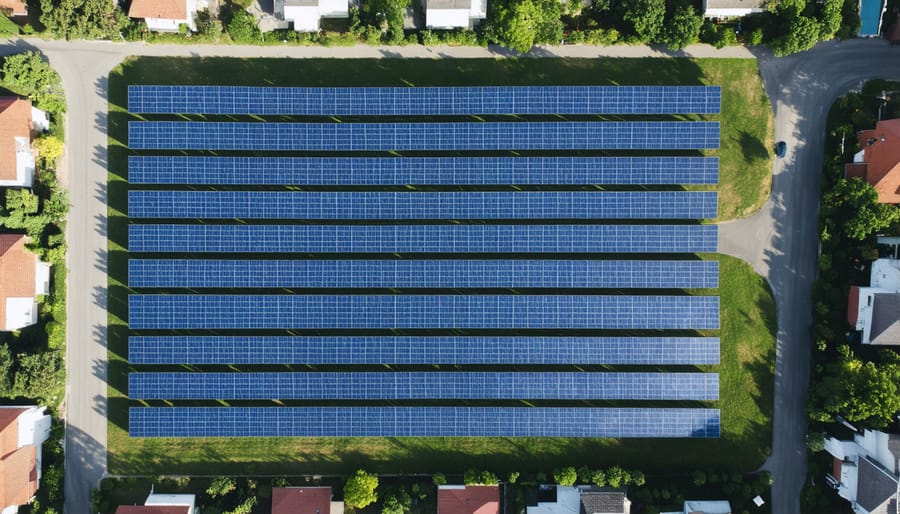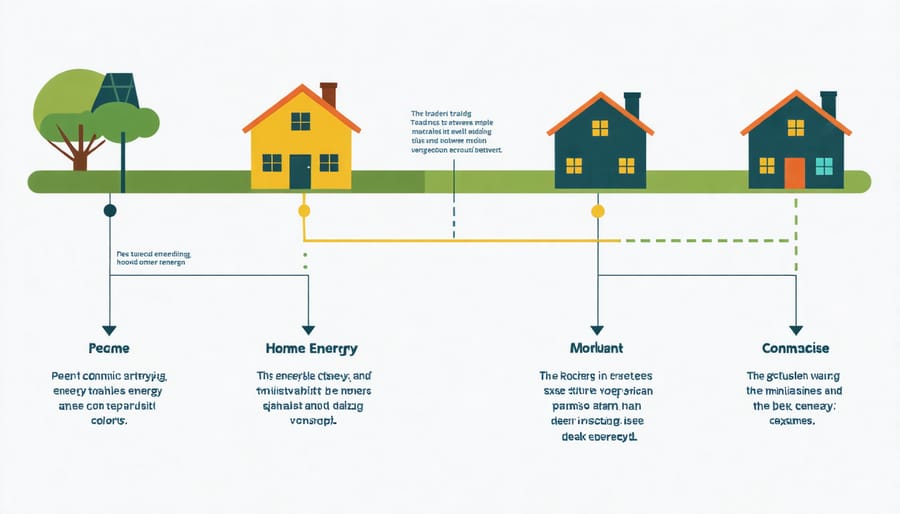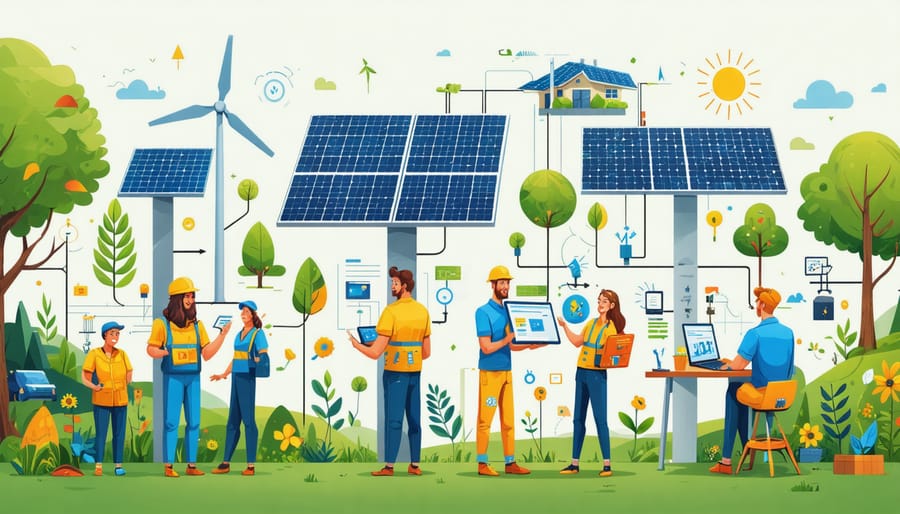Imagine powering your community through shared ownership and democratic control of renewable energy resources. Energy cooperatives are revolutionizing Australia’s power landscape, enabling everyday citizens to collectively own, manage, and benefit from sustainable energy production. Through community power initiatives, neighborhoods are transforming from passive energy consumers into active producers, reducing electricity costs while accelerating the transition to clean energy.
From the Hepburn Wind Farm in Victoria to the bustling solar gardens of New South Wales, energy cooperatives are proving that local communities can take charge of their energy future. These member-owned organizations are democratizing access to renewable energy, creating local jobs, and keeping energy profits within the community rather than flowing to distant corporations.
By combining the purchasing power of hundreds or thousands of members, energy cooperatives negotiate better rates, fund innovative projects, and build resilient local energy systems that benefit everyone involved. This grassroots approach to energy production isn’t just changing how we power our homes—it’s reshaping the entire energy landscape, one community at a time.
How Community Energy Co-ops Work
Structure and Governance
Energy cooperatives operate on a democratic ownership model where members collectively own and manage the organization. Each member typically holds one share and one vote, ensuring equal representation regardless of investment size. This structure empowers local communities to take control of their energy future while sharing both the responsibilities and benefits.
The governance framework usually consists of an elected board of directors, chosen by members during annual general meetings. These directors oversee strategic decisions while working closely with professional management teams handling day-to-day operations. Regular member meetings provide forums for discussing major initiatives, setting policies, and ensuring transparency in decision-making.
Members benefit through various mechanisms, including reduced energy costs, annual dividends from surplus revenues, and the ability to influence the cooperative’s direction. Many Australian energy cooperatives also reinvest profits into community projects or expand renewable energy infrastructure, creating a positive feedback loop of sustainable development.
The cooperative model particularly shines in regional communities, where members can pool resources to fund larger renewable energy projects that might otherwise be unfeasible for individual households or businesses. This collective approach not only makes renewable energy more accessible but also strengthens community bonds and local economic resilience.
Financial Model
Energy cooperatives operate on a unique financial model that balances community investment with sustainable returns. Members typically make an initial investment through purchasing shares, with costs ranging from a few hundred to several thousand dollars depending on the project scale. This democratic approach ensures everyone has skin in the game while keeping entry barriers reasonable.
The returns are structured around both direct and indirect benefits. Members often receive annual dividends from energy sales to the grid, with typical returns ranging from 3-7% annually. They also benefit from reduced energy costs through preferential rates and credits on their power bills. Many Australian cooperatives have implemented successful split-billing systems, where members share the savings proportionally to their investment.
Cost-sharing extends beyond initial investments to maintenance and operational expenses. These are typically covered through a combination of energy sale revenues and modest membership fees. Some cooperatives have established emergency funds for unexpected repairs, ensuring long-term sustainability. This model has proven particularly successful in regional communities, where shared resources have helped achieve economies of scale that would be impossible for individual households.

Peer-to-Peer Energy Trading
Technology Behind P2P Trading
The technological backbone of peer-to-peer energy trading combines several innovative systems working in harmony. At its core are smart meters, which provide real-time data about energy production and consumption. These sophisticated devices enable households to monitor their energy use precisely and make informed decisions about when to buy, sell, or store power.
Blockchain technology plays a crucial role in securing and automating transactions between cooperative members. This distributed ledger system ensures transparent, tamper-proof records of all energy exchanges, while smart contracts automatically execute trades based on predetermined conditions and preferences set by participants.
Advanced community solar storage solutions work alongside sophisticated local energy management systems to optimise power distribution. These systems use artificial intelligence to predict energy demand patterns, manage battery storage levels, and balance grid loads effectively.
User-friendly mobile apps and web platforms make it easy for members to participate in the energy market. These interfaces provide real-time pricing information, usage statistics, and trading opportunities, allowing members to make decisions that benefit both their wallet and the community. The integration of these technologies creates a robust, efficient system that empowers communities to take control of their energy future while maintaining grid stability and reliability.

Benefits for Members
Joining an energy cooperative opens up a world of benefits that extend far beyond simple power supply. Members typically enjoy significant cost savings on their energy bills, with many cooperatives reporting reductions of 20-30% compared to traditional utilities. These savings come from the cooperative’s not-for-profit structure and the ability to negotiate better rates through collective purchasing power.
Energy independence is another crucial advantage. Members gain more control over their energy sources and can actively participate in decisions about future investments and infrastructure development. This autonomy means communities can prioritize renewable energy projects that align with their values and local needs, reducing dependence on large corporate utilities.
The community empowerment aspect of energy cooperatives creates lasting positive impacts. Members become shareholders in their energy future, with voting rights and the opportunity to serve on the cooperative’s board. This democratic structure ensures that benefits flow directly back to the community rather than to distant shareholders. Many Australian cooperatives also reinvest surplus funds into local projects, from solar installations for schools to energy efficiency programs for low-income households.
Financial returns are another attractive benefit. Members often receive annual dividends based on their energy usage and initial investment, creating a sustainable economic model that rewards participation. Additionally, cooperatives frequently offer educational programs and technical support, helping members optimize their energy use and embrace new sustainable technologies.
Success Stories from Australian Communities
Rural Success Stories
The Hepburn Wind project in Victoria stands as a shining example of rural energy cooperation, powering over 2,000 homes through community-owned wind turbines. What began as a local initiative has become a blueprint for regional renewable energy success, inspiring similar projects across the country.
In South Australia, the Renmark Irrigation Trust transformed agricultural waste into energy gold. By converting prunings and organic matter into bioenergy, they’ve reduced power costs for local farmers by 30% while creating new revenue streams for the community.
The Northern Rivers region of NSW showcases how multiple communities can work together effectively. Their network of mini-grids connects seven townships, sharing solar and battery storage resources. During the 2022 floods, this system proved invaluable, maintaining power supply when traditional infrastructure failed.
The Totally Renewable Yackandandah initiative in Victoria demonstrates how a small town of 950 residents can lead big change. Their combination of solar panels, battery storage, and smart energy management has put them on track to achieve 100% renewable energy by 2024, proving that size is no barrier to ambitious energy goals.
These success stories highlight how rural communities are pioneering Australia’s energy transition, combining innovation with cooperative spirit to create sustainable, resilient power systems.
Urban Initiatives
Several Australian cities are leading the way with innovative urban energy cooperative initiatives. In Melbourne, the Brunswick Energy Cooperative has transformed a former industrial site into a community solar farm, powering over 500 households while reducing energy costs by 30% for its members. The project showcases how urban communities can collaborate to create sustainable energy solutions in space-constrained environments.
Sydney’s Inner West Energy Alliance demonstrates the power of apartment-dwelling communities working together. By installing shared solar systems across multiple apartment buildings, they’ve created a micro-grid that serves 1,200 residents. The cooperative manages everything from installation to maintenance, with members enjoying both environmental and financial benefits.
Brisbane’s CitySmart Energy Initiative has taken a unique approach by combining rooftop solar with battery storage systems across commercial buildings. This cooperative venture between business owners and local residents has created a resilient urban energy network that operates even during grid outages.
These urban initiatives prove that energy cooperatives aren’t limited to rural areas. Through innovative design and community collaboration, city dwellers are creating sustainable energy solutions that work within urban constraints while building stronger, more resilient communities.
Starting Your Own Energy Co-op
Legal Requirements
In Australia, establishing an energy cooperative requires compliance with specific legal frameworks and regulatory requirements. The primary legislation governing cooperatives is the Co-operatives National Law (CNL), which provides a unified structure across participating states and territories.
To form an energy cooperative, founders must first register with the relevant state authority, typically the Department of Fair Trading or equivalent body. The registration process involves submitting a comprehensive formation package, including the proposed rules of the cooperative, a disclosure statement, and evidence of member support.
Energy cooperatives must also comply with energy sector regulations, including obtaining necessary licenses from the Australian Energy Regulator (AER) if planning to generate, distribute, or retail electricity. Environmental permits and planning approvals from local councils may be required for infrastructure development.
A minimum of five members is required to form a cooperative, and all members must hold shares. The cooperative must maintain proper governance structures, including a board of directors elected by members, and hold regular general meetings. Annual reporting obligations include financial statements and compliance reports to regulatory authorities.
Professional legal and financial advice is recommended during the establishment phase to ensure all requirements are met and risks are properly managed.
Building Community Support
Building community support is the cornerstone of successful energy cooperatives, and it starts with grassroots engagement. Local community meetings, information sessions, and workshops serve as essential platforms for bringing people together and sharing the vision of community-owned renewable energy.
Successful cooperatives often begin by identifying local energy champions – respected community members who can advocate for the project and build trust among residents. These champions help spread awareness through existing community networks, local markets, and neighbourhood events.
Digital engagement strategies, including social media campaigns and dedicated websites, complement face-to-face interactions. Regular newsletters and updates keep members informed and involved in the cooperative’s progress. Many Australian energy cooperatives have found success by partnering with local councils and community organisations to expand their reach.
Demonstrating tangible benefits is crucial. This can include organizing site visits to existing renewable energy projects or calculating potential cost savings for households. Some cooperatives have implemented pilot projects or demonstration installations to show the practical advantages of community-owned energy.
Educational initiatives play a vital role, particularly those focusing on energy literacy and the environmental benefits of renewable energy. School programs and youth engagement help ensure long-term community support and create a pipeline of future cooperative members.

Future of Energy Co-ops in Australia
The future of energy co-ops in Australia looks increasingly bright, with projections suggesting significant growth over the next decade. As communities become more environmentally conscious and seek greater control over their energy future, these collaborative models are positioned to play a pivotal role in Australia’s energy transition.
Emerging technologies are creating exciting opportunities for energy co-ops. Battery storage solutions are becoming more affordable, enabling communities to store excess solar power and reduce their reliance on the grid. Virtual power plants (VPPs) are also gaining traction, allowing multiple households to combine their solar and storage systems into a single, powerful network that can better manage energy supply and demand.
Policy support is strengthening at both state and federal levels. The Community Energy Target initiatives being developed in several states are expected to provide financial incentives and regulatory frameworks that will make it easier for communities to establish and operate energy co-ops. Additionally, simplified planning processes and dedicated funding programs are helping to reduce barriers to entry.
Several innovative pilot projects are already showing what’s possible. In regional Victoria, communities are exploring microgrids that combine solar, wind, and biomass energy sources. Meanwhile, in Queensland, coastal communities are developing hybrid systems that integrate wave energy with traditional renewable sources.
The sector is also evolving to embrace new business models. Some co-ops are expanding into electric vehicle charging networks, while others are exploring peer-to-peer energy trading platforms. This diversification is creating more opportunities for community participation and investment in sustainable energy solutions.
As climate action becomes increasingly urgent, energy co-ops are set to become a cornerstone of Australia’s renewable energy landscape, empowering communities while driving the transition to a cleaner, more sustainable future.
Energy cooperatives represent a powerful solution for communities seeking to take control of their energy future while contributing to Australia’s renewable energy transition. By bringing together local resources, expertise, and shared commitment to sustainability, these member-owned organizations are proving that collective action can drive meaningful change in our energy landscape.
Throughout this article, we’ve explored how energy cooperatives operate, their numerous benefits for communities and the environment, and the practical steps needed to establish and maintain them. From reduced energy costs and increased grid resilience to stronger community bonds and local economic development, the advantages of participating in an energy cooperative are clear and compelling.
The time to act is now. Whether you’re an individual looking to join an existing cooperative, a community leader interested in starting one, or an organization seeking to support these initiatives, your participation can make a difference. By embracing energy cooperatives, we’re not just choosing a more sustainable energy future – we’re building stronger, more resilient communities across Australia.
Take the first step today by connecting with local energy groups, attending community meetings, or reaching out to established cooperatives for guidance. Together, we can create a more sustainable and equitable energy system for future generations.

